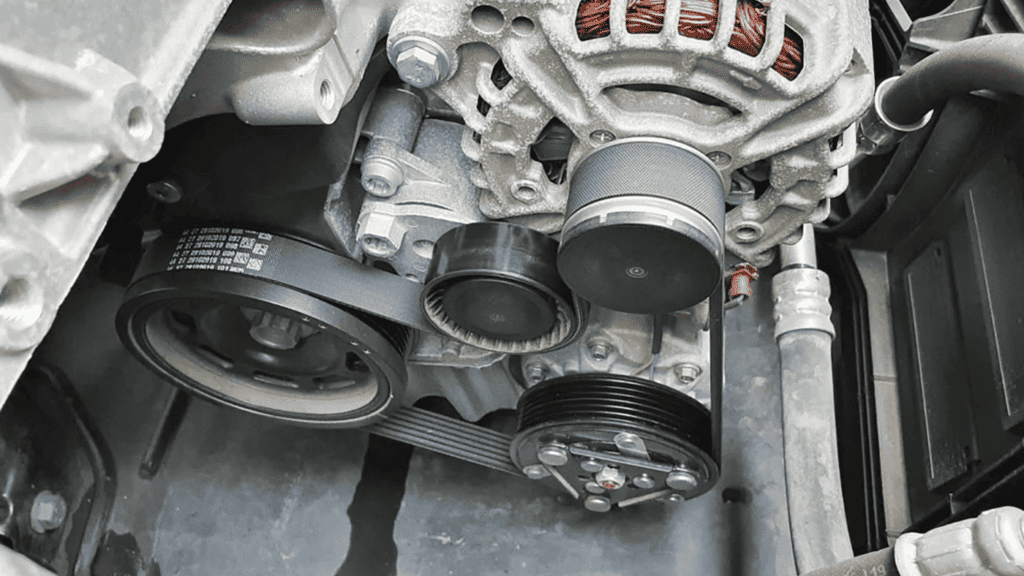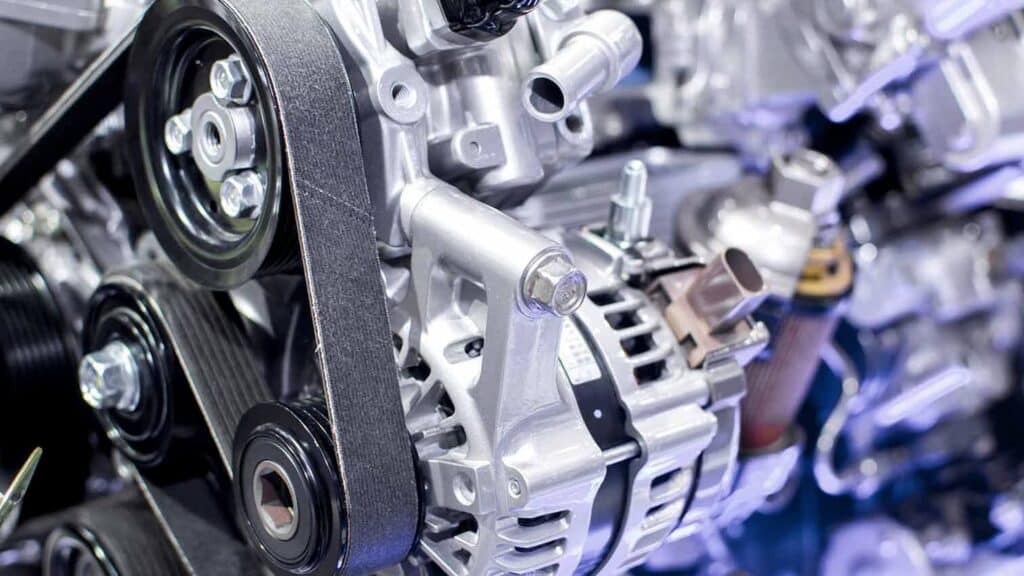How Long Do Serpentine Belts Last and When to Replace Them
Imagine cruising along a picturesque highway, enjoying the serene landscape, when suddenly, your car starts showing signs of distress. The power steering fails, the battery light comes on, and the engine starts to overheat. What could possibly be the cause? The answer might be right under your hood – your car’s serpentine belt.
The Unsung Hero: Average Lifespan of a Serpentine Belt
Often an unsung hero, the serpentine belt, also known as the drive belt, is a vital part of your car’s engine. It powers various accessories like the alternator, power steering pump, air conditioning, and in some cases, the water pump. Despite its importance, many drivers are unaware of its lifespan or when it needs replacing.
On average, a serpentine belt lasts around 60,000 to 100,000 kilometers. But, like any part of your vehicle, its lifespan can vary greatly depending on the vehicle model, belt quality, and driving conditions. For instance, if your driving regularly involves harsh weather or dusty roads, these could accelerate wear and tear.

Unraveling the Signs: When Should You Replace Your Serpentine Belt?
Spotting the Symptoms: Recognizing the Need for a Serpentine Belt Replacement
Understanding the signs of a failing serpentine belt is as critical as knowing its typical lifespan. A range of symptoms can signal that your serpentine belt is nearing the end of its service life, including:
Squealing Noise: A Telltale Sign of a Worn Serpentine Belt
One of the earliest and most discernible symptoms of a worn-out serpentine belt is an unusually loud squealing noise emanating from the engine. This noise is typically most noticeable during startup or low-speed maneuvers. It is often caused by a belt that has become loose and is now slipping on the pulleys. However, this squealing could also be a sign that the belt is hardening and losing its flexibility or that it has been contaminated by oil or coolant.
Visible Wear: Keeping an Eye Out for Physical Damage
Another clear sign of a worn serpentine belt is visible damage or degradation. During your regular car maintenance checks, make a point to inspect the belt. Look for signs of wear such as surface cracks, fraying edges, or missing ribs. If you notice any of these conditions, it’s a good indication that the belt needs to be replaced. Even a belt that looks good but has been in service for a long time or in harsh conditions might be harder than a new one and could still cause problems.
Power Loss: Understanding the Consequences of Serpentine Belt Failure
The serpentine belt plays a vital role in powering various car accessories like the power steering pump, the alternator, and sometimes the water pump. So, a failing serpentine belt can lead to failure in these systems. If you’re experiencing difficulty steering, it could be due to a failing power steering pump. If the battery light on your dashboard comes on, it could mean the alternator isn’t getting enough power. If your car starts to overheat, it could be due to a water pump failure. All these are signs that your serpentine belt might need replacement.
It’s essential to address these signs promptly, as a failure could leave you stranded. Remember, preventive maintenance is always less costly than emergency repairs!
Maintenance Matters: Prolonging Your Serpentine Belt’s Lifespan
Regular inspections and maintenance are critical to prolong the lifespan of your serpentine belt. Expert recommendations suggest checking the belt every 20,000 kilometers or once a year, whichever comes first. Look for signs of wear or damage. Also, ensure that the belt isn’t too loose or too tight as improper tension can lead to premature wear.
DIY or Professionals? Making the Choice for Belt Replacement
When it comes to replacing the serpentine belt, you could either do it yourself or seek professional help. If you’re mechanically inclined, have the necessary tools, and your vehicle design allows easy access, you could save some money by doing it yourself. There are numerous online guides and video tutorials to assist you.
However, for those not comfortable tinkering under the hood, or if your vehicle requires disassembling multiple components to reach the belt, getting it professionally done is the safer choice. Plus, mechanics often check other components during replacement, which could prevent future problems.
Maximize Your Investment: Tips to Extend Your Serpentine Belt’s Lifespan
To make the most of your serpentine belt investment, consider these tips:
The Worthwhile Investment: Opting for High-Quality Replacement Belts
It’s essential to remember the old saying, “you get what you pay for” when it comes to replacing your serpentine belt. High-quality replacement belts may seem expensive at first glance, but the long-term benefits they offer significantly outweigh the initial cost. They tend to last longer, proving more resistant to wear and tear, thereby minimizing the chances of premature failure. It’s all about investing wisely in your vehicle’s longevity. So, don’t compromise on the quality of the serpentine belt, as it plays a pivotal role in your car’s overall functionality and performance.

Cleanliness Is Next to Belt Longevity: The Importance of Keeping Your Engine Clean
Dirt and grime might seem harmless, but they can wreak havoc on your car’s serpentine belt. These contaminants can work their way into the belt system, accelerating wear and leading to early belt failure. Regularly cleaning your engine helps to keep these unwelcome intruders at bay, preserving the integrity and extending the life of your serpentine belt. Make engine cleaning a part of your standard car maintenance routine. It’s a small task that goes a long way in ensuring the overall health of your vehicle.
Vigilance Against Leaks: Regular Checks to Prevent Belt Deterioration
Staying vigilant about potential leaks from the engine components is another vital step in extending the life of your serpentine belt. Various fluids within your engine, such as oil or coolant, can cause the belt to slip off the pulleys, which results in accelerated deterioration. Regularly inspect your engine for any signs of leakage and address any issues promptly. By taking preemptive action, you can prevent unnecessary damage to the belt, thereby prolonging its lifespan and keeping your vehicle running smoothly.
Remember, your car’s serpentine belt is a key player in its smooth operation. Knowing its lifespan, recognizing the signs of wear, and performing regular maintenance will help ensure a trouble-free ride.
